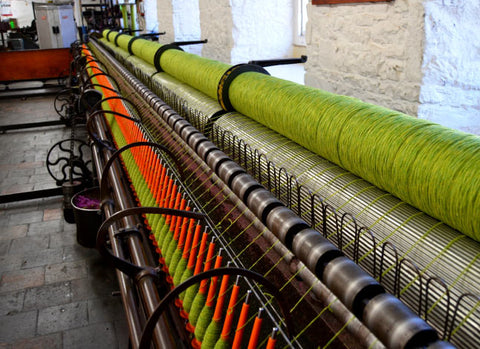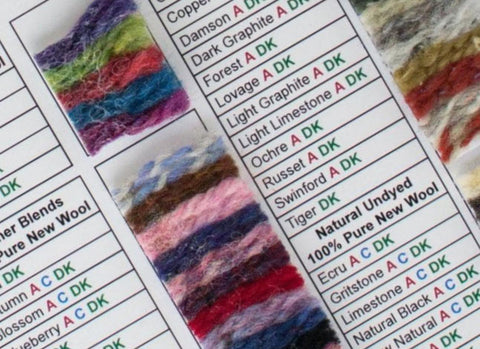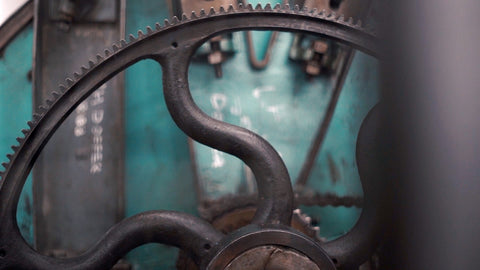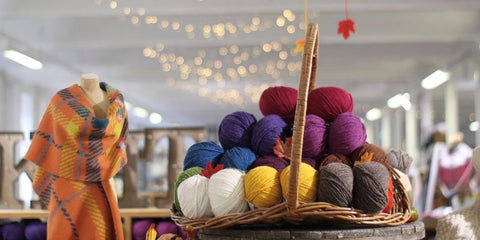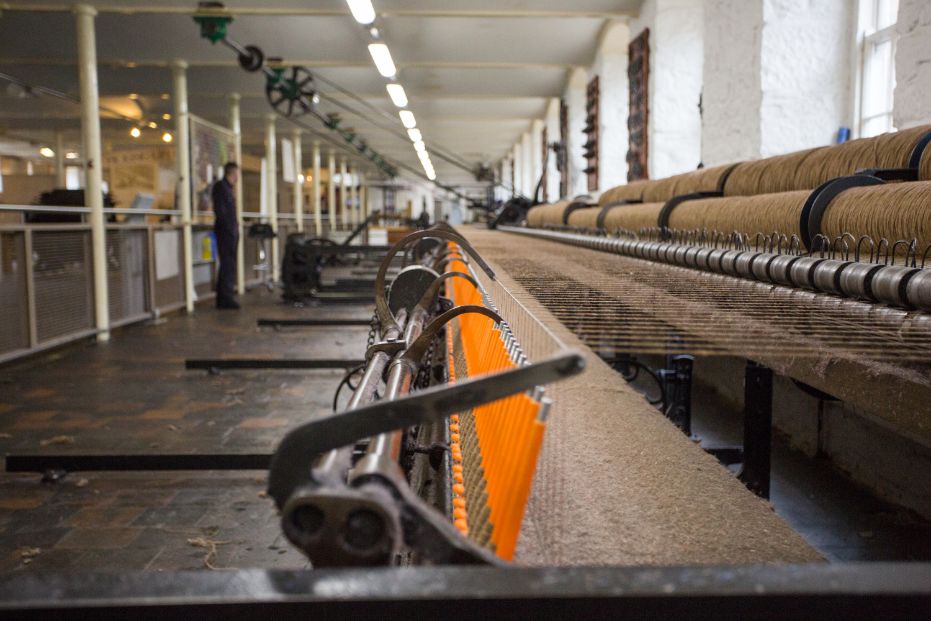
Our Yarn Process
New Lanark Yarn is unique because it is spun on an historic 19th century spinning machine that was salvaged from a mill in Selkirk in the Scottish Borders.
New Lanark Mills were originally built and operated as a cotton mill. In 1968 production ceased and the mills closed down. The Mills were taken over by a metal merchant who removed all the machinery for scrap, leaving empty buildings. In 1974 New Lanark Conservation Trust was formed and renovation of the buildings started.
In 1989 New Lanark Conservation Trust installed machinery similar to the old original machinery in order to start a spinning operation. The yarn trade however was in a rapid decline, with mills closing down and machinery being sold for scrap or going abroad.
Ettrick Mill in Selkirk in the Scottish Borders was reducing operations and making machinery available. This is when the challenge started- to rescue machinery from the scrap merchant, remove a full woollen spinning line from Selkirk, transport it on the local coalman’s lorry and renovate and re-build it at New Lanark.
What started out as a small part of the restoration project for the Visitor Attraction has now become established as an increasingly successful and important revenue stream for New Lanark. The village has re-invented its role as a spinning centre as it once was, this time spinning woollen yarn instead of cotton in a small-scale production unit using traditional methods. It has taken 20 years of experimentation, training, rationalisation and hard work to build our expertise and get production to its current stage. We now have a good quality finished product that we sell around the world.
1. WOOL FIBRE
A very important part of the wool-spinning process is the selection of the right fibre for the job in question. Yarn for hand knitting and hosiery needs to be soft and nice to handle, and not hard like the yarn used to make carpets, for example. We choose the best wool fibre from Britain, Australia and New Zealand to fit our requirements.
2. BLENDING
A crucial part is the mixing, blending of fibres, colours and lubricant together, consistent in its properties to give an even level yarn. We do this by using the traditional method on a blending tray and laying out the carefully weighed proportions of the different components in layers with the lubricant making a stack.
The blend is then ready to be fed into the fearnaught, this machine mixes and opens the blend, which is then pneumatically moved into the first bin then to a second bin, to helping give a better mix of the components. The blending process is the most dusty and dirty part of the process. It can take all day – around 8 hours to blend a batch of 500 kilos.
3. CARDING
The carding machine cleans and combs the wool and aligns the fibres ready for spinning.
The carding machine has two main sections: the scribbler and the carder. Each of these sections are both made up the same way with the rollers. The rollers are covered with fine card wire and run at carrying speeds.
4. MULE SPINNING & CONE WINDING
The machine was made by Platt Brothers Oldham in the year 1891 has 392 spindles that have a 6ft draw at 3 draws per minute.
The automatic winding machine winds up the small cops or pirns from the spinning mule and removes any imperfections, e.g. knots, lumps, and smooths out thick or thin areas.
At the same time it also joins the yarn back together with an air splice to make the yarn knot-free. This also makes a large cone that is more suitable for the next process and customer’s requirements.
5. PLYING – TWISTING FRAME
Twisting involves plying different numbers of threads of yarn together to make different qualities for hand knitting with varying amounts of twist.
We always twist in the opposite direction to the single twist otherwise the yarn would be hard and very springy, making it impossible to knit with.
8. WASTE & RECYCLING
In the wool production process up to 50% of the weight of the original fleece is lost by the time it’s spun into yarn. You would think that this seems like a lot is wasted, but that’s not true. All through the process, fleece or broken ends are all collected and can be recycled. When gathered in large enough batches it is dyed black and reblended to go through the process again.


